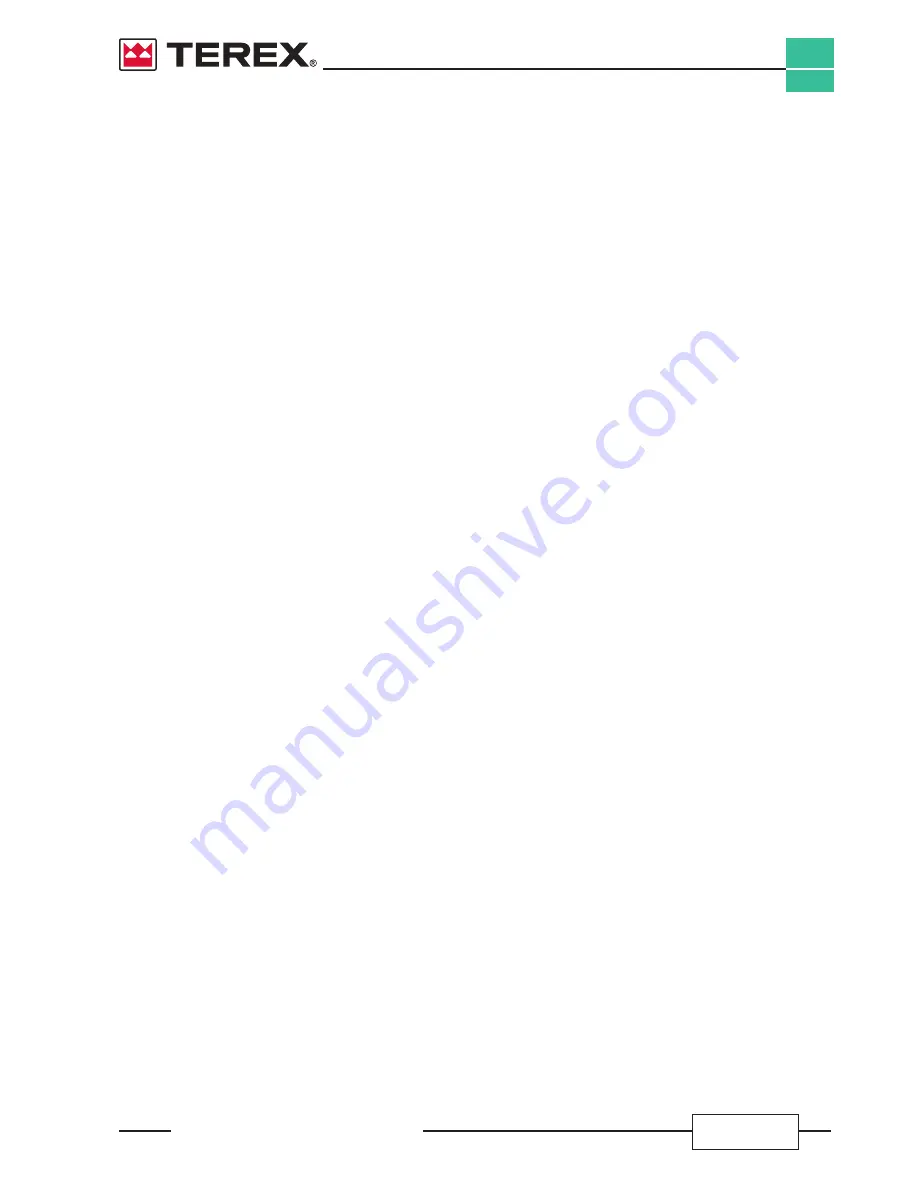
Document 57.4402.8200 - 1
st
Edition 03/2007
INDEX
x
GYRO 4020 - 4518
INTRODUCTION
The function of these valves is to avoid a pressure of
the drain line of motor (
50
) above 1.5 bar which is the
admissible limit for the seals placed on the motor shaft.
This circuit allows for the partial passage through the
heat exchanger (
43
) of the flow from the pump drain
circuit (
2
) and the drive motor (
50
) to keep within the
pressure limits mentioned above. Any excess flow will
pass through valve (
47
) to directly reach the tank (
32
).
Ports n.4 and n.10 of the hydraulic rotary joint (
9
) are
used to connect some drain lines between undercarriage
and turntable. In particular, port n.10 is the one which
can guarantee the lowest counter-pressure values on
the drain, being directly connected to tank (
32
).
The motor-driven pump (
48
), supplied with power by the
battery, is used as emergency feeding pump in the event
of a failure of the primary control circuit of the telescopic
boom. Just downstream of the motor-driven pump (
48
)
there is a one-way valve (
49
) which avoids that oil at
pressure, produced by the main pump (
3
), may escape
through pump (
48
) when this is stopped.
The movements of the front outriggers are controlled
by four 4-way/3-position solenoid valves of the o/off
type, installed on the oil-pressure block (
70
). This block,
through port 3 of the hydraulic rotary joint (
9
), is fed
by the simultaneous operation of the 4
th
element of the
electro-proportional main valve (
8
) and of the electric
divider (
22
).
The solenoid valve n. 1 of block (
70
) controls the
cylinder (
71
) operating the front left stabilising foot. This
cylinder is equipped with a double-acting compensation
valve(
72
) used also as safety valve.
On the rod side of this cylinder, there is a pressure
gauge (
73
) calibrated to 50 bar which detects when the
outrigger is lowered to the ground.
The solenoid valve n. 2 of block(
70
) controls the
extension cylinder (
74
) of the front left outrigger. This
cylinder is equipped with a double one-way valve with
hydraulic release, acting as a safety valve (
75
).
The solenoid valve n. 3 of block (
70
) controls the
extension cylinder (
76
) of the front right outrigger.
This cylinder is equipped with a double one-way valve
with hydraulic release, acting as a safety valve (
77
).
The solenoid valve n. 4 of block (
70
) controls the
cylinder (
78
) operating the front right stabilising foot.
This cylinder is equipped with a double-acting
compensation valve (
79
) used also as safety valve.
On the rod side of this cylinder, there is a pressure
gauge (
80
) calibrated to 50 bar which detects when the
outrigger is lowered to the ground.
The movements of the rear outriggers are controlled by
four solenoid valves installed on the oil-pressure block
(
81
).
This block, through port 3 of the hydraulic rotary joint
(
9
), is fed by the simultaneous operation of the 4
th
element of the electro-proportional main valve (
8
) and
of the electric divider (
22
).



































